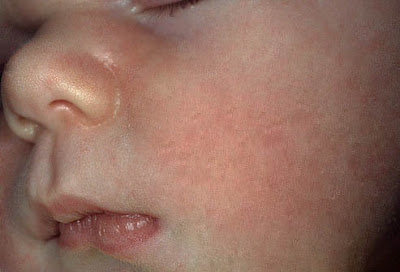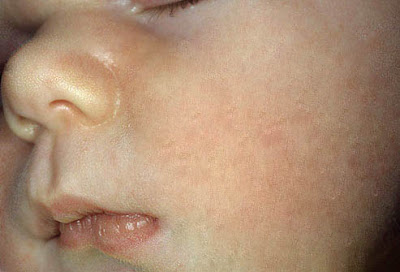Selection Tools
Marquee Tool (M)
The Marquee Tools (M) let you select rectangles, ellipses, and 1-pixel rows and columns. By default, a selection border is dragged from its corner. You can also hold-down following keyboard key while dragging mouse to make selection for perform specific option.
- Shift+Drag: To constrain the marquee to a square or circle.
- Alt+Drag (Option for Mac): To start drag marquee from center..
- Alt+Shift+Drag: To start drag selection form center and constrain to square.
- Spacebar: Hold down spacebar while making selection (keep pressing mou se button). To reposition selection.

Move Tool (V)
The Move tool (V) lets you drag a selection or layer to a new location in the image, and also to other images. You can also use the Move tool to align selections and layers and distribute layers within an image.
You can access Move tool by press (V) in your keyboard or hold-down Ctrl(Command) keys. Press and hold Shift key while drag your mouse will constrain movement with multiple of 45°(0°, 45°, 90° and so on..). Press Ctrl (Command) + Alt(Option) to copy and move objects.
Lasso Tool , Polygonal Lasso Tool and Magnetic Lasso Tool
The Lasso tool (L) and the Polygonal Lasso tool (L) let you draw both straight-edged and freehand segments of a selection border. With the Magnetic Lasso tool (L), the border snaps to the edges of defined areas in the image.
While you are using Lasso tool you can hold-down Alt(Option) key to switch between draw free-hand and draw straight-edged.
Quick Selection Tool and Magic Wand Tool
You can use the Quick Selection tool (W), new in Photoshop CS3, to quickly paint a selection using an adjustable round brush tip. As you drag, the selection expands outward and automatically finds and follows defined edges in the image.
The Magic Wand tool (W) lets you select a area by color range without having to trace its outline. You can specify the color range, or tolerance, for the Magic Wand tool's selection at tool's option bar. Enter a low value to select the few colors very similar to the pixel you click, or enter a higher value to select a broader range of colors.
Crop and Slice Tools
Crop Tool (C)
Cropping is the process of removing portions of an image to create focus or strengthen the composition. You can crop an image using the Crop tool and the Crop command (Image » Crop).
Slice Tool and Slice Selection Tool
Use Slice Tool (K)tool to divide large image to small connected pieces of rectangle image that is useful for building website. You can select the slice area manually of create from guides, by click Slice from Guide button at Slice Tool option bar.
Retouching Tools
Spot Healing Brush Tool and Healing Brush Tool
The Healing Brush tool (J) lets you correct imperfections, causing them to disappear into the surrounding image. Like the cloning tools, you use the Healing Brush tool to paint with sampled pixels from an image or pattern. However, the Healing Brush tool also matches the texture, lighting, transparency, and shading of the sampled pixels to the source pixels. As a result, the repaired pixels blend seamlessly into the rest of the image.
The Spot Healing Brush Tool (J) is different from the Healing Brush Tool in that it does not require you to make a selection or define a source point before using it. You can select a blending mode for the healing, and choose between proximity match or create texture. You can also sample all layers which allow you to use the spot healing tool on a new layer for non-destructive editing.
Patch Tool and Red Eye Tool
The Patch tool (J) lets you repair a selected area with pixels from another area or a pattern. Like the Healing Brush tool, the Patch tool matches the texture, lighting, and shading of the sampled pixels to the source pixels. You can also use the Patch tool to clone isolated areas of an image.
The Red Eye Tool (J) use to correct red eye error that may produce by using electronic flash. You can roughly select around the eye and set pupil diameter to easily correct the red eye. If you like see the tutorial to use Red-Eye Tool
Clone Stamp Tool and Pattern Stamp Tool
The Clone Stamp tool(S) can be use to fix your image. It’s allowing you to paint with sample from area you select to another image or part of the same image. You can also clone part of one layer over another layer. Because you can use any Photoshop Brush with the Clone Stamp tool, you have a lot of control over the size of the area you clone. You can also use opacity and flow settings in the options bar to finesse the way you apply the cloned area.
The Pattern Stamp tool(S) take sample from Pattern preset instead form sample point in the image. You can select a pattern from the pattern libraries or create your own patterns.
Eraser Tool, Background Eraser and Magic Eraser Tool
The Eraser tool (E) delete pixels in the image as you drag through them. If you're working in the background or in a layer with transparency locked, the pixels change to the background color. Otherwise, the pixels are erased to transparency. You can also use the eraser to return the affected area to a state selected in the History palette.
The Background Eraser tool(E) allows you to erase the background while maintaining the edges of an object in the foreground. By specifying different sampling and tolerance options, you can control the range of the transparency and the sharpness of the boundaries.
The Magic Eraser tool (E), the tool automatically changes all similar pixels. If you're working in the background or in a layer with locked transparency, the pixels change to the background color; otherwise, the pixels are erased to transparency. You can choose to erase contiguous pixels only or all similar pixels on the current layer.
Blur Tool, Sharpen Tool and Smudge Tool
The Blur tool(R) softens hard edges or areas in an image to reduce detail as you drag. You can specify area and amount of blur by modifying brush shape and dynamic. Blur tool blur image by lessening the amount of color contrast between neighboring pixels. In contrasted, The Sharpen Tool(R) focuses soft edges to increase clarity by selectively sharpens by increasing the contrast between neighboring pixels.
The Smudge tool(R) simulates the actions of dragging a finger through wet paint. The tool picks up color where the stroke begins and pushes it in the direction you drag. This tool can be effective for smoothing out colors and textures.
Dodge Tool and Burn Tool
Dodge Tool (O) and Burn Tool (O) are use to lighten or darken areas of the image, the name are based on a traditional photographer's technique. Photographers hold back light to lighten an area on the print (dodging) or increase the exposure to darken areas on a print (burning).
Sponge Tool
The Sponge tool (O) subtly changes the color saturation of an area depend on the mode you're selected. In Desaturate mode, the Sponge tool robs an image of color when working inside a color image. If you switch to Saturate mode, the Sponge tool adds more color in color images. In Grayscale mode, the tool saturation mode will increases contrast of the image and in opposite, desaturation mode, decreases contrast by moving gray levels away from or toward the middle gray.
Painting Tools
Brush Tool, Pencil Tool (B) and Color Replacement Tool
The Brush Tool (B) and Pencil Tool (B) are paints a line of any thickness that you specify via the Options bar. You can make the line sharp or blurry, but it's always slightly soft or hard edge stroke for Pencil Tool. Normally, the Brush tool and Pencil tool applies a continuous stream of color and stops applying paint whenever you stop dragging.
The Color Replacement tool (B) simplifies replacing specific colors in your image when you paint. You can paint over a targeted color with a corrective color. For example, You can select sample color as red, and painted foreground color to correct a person's red eyes in an image. The Color Replacement tool doesn't work in images in Bitmap, Indexed, or Multichannel color modes.
History Brush and Art History Brush Tool
This tool works similar to the Brush Tool except the History Brush (H) and Art History Brush tool (H) allow you to paint from specified history state or snapshot as the source data. The History Brush tool paints by recreating the specified source data, while the Art History Brush tool uses that data along with the options you set to create different colors and artistic styles.
Gradient Tool and Paint Bucket Tool
The Gradient Tool (G), fill solid or blended color to any area of the image. The Gradient tool creates a gradual blend between multiple colors. You can choose from preset gradient fills or create your own.
The Paint Bucket tool (G) fills adjacent pixels that are similar in color value to the pixels you click. It work very similar to Magic Wand tool but Paint Bucket fill solid color instead of making selection.
Drawing and Type Tools
Path Selection Tool and Direct Selection Tool
Use Path Selection tool (A) to select a path component (including a shape in a shape layer) and click anywhere inside the path component. If a path consists of several path components, only the path component under the pointer is selected. To display the bounding box along with the selected path, select Show Bounding Box in the options bar.
Use Direct Selection tool (A) to select a path segment and click one of the segment's anchor points or drag a marquee over part of the segment. To select additional path components or segments, select the Path Selection tool or the Direct Selection tool, and then hold down Shift while selecting additional paths or segments.
Horizontal Type Tool and Vertical Type Tool
Use Horizontal Type Tool (T) and Vertical Type Tool (T) to create horizontal or vertical type anywhere in an image. When you create type, a new type layer is added to the Layers palette. In Photoshop, you can also create a selection border in the shape of the type.
Horizontal Type Mask Tool and Vertical Type Mask Tool
Horizontal Type Mask tool (T) or Vertical Type Mask tool (T) let you create a selection in the shape of the type. Type selections appear on the active layer, and can be moved, copied, filled, or stroked just like any other selection. For more information about working with selections
Pen Tool and Freeform Pen Tool
The Pen tool (P) lets you create straight lines and smooth flowing curves as new Path or Shape layer or Fill pixels , by select its icon at tool option bar. For most users, the Pen tool provides the best control and greatest accuracy for drawing.
The Freeform Pen tool (P) lets you draw as if you were drawing with a pencil on paper. Anchor points are added automatically as you draw. You do not determine where the points are positioned, but you can adjust them once the path is complete.
Add Anchor Point Tool , Delete Anchor Point Tool and Convert Point Tool
You can add or delete or convert anchor point using Add Anchor Point Tool and Delete Anchor Point Tool. If you have selected Auto Add/Delete in the options bar for the Pen tool or Freeform Pen tool, when you click at active path's line segment, a point is added, and when you click an existing point, it is deleted. The cursor will change to indicate that you can add anchor point or change to while you hover the cursor over existing point.
The Convert Point Tool lets you convert a smooth curve to a sharp curve or to a straight segment, and vice versa. While you using Pen tool or Freeform Pen tool you can also convert anchor point by hold down Alt (Option), the cursor will turn to , key and click at the point you want to convert.
Shape Tool (U)
Photoshop provides six Shape Tools that enable you to draw geometric and predefined shapes. By default, the shapes are separated off into independent Shape layers, which are a mix of objects and pixels. The vector-based outlines of the shapes print at the maximum resolution of your printer, but the interiors may consist of solid colors, gradients, or pixel-based patterns and images. Other than shape layer, you can also use Shape tool to create Path or Fill pixels by select Path button or Fill Pixels Button at the tool option bar.
Note, Measurement and Navigation Tools
Notes Tool and Audio Annotation Tool
Notes Tool (N) and Audio Annotation Tool (N) allow you to can add notes and audio annotations anywhere on a Photoshop image canvas. When you create a note, a resizable window appears for typing text. When you record an audio annotation, you must have a microphone plugged into the audio-in port of your computer.
Eyedropper tool and Color Sampler Tool
The Eyedropper tool (I) samples color to designate a new foreground or background color. You can sample. You can click to sample color assign to foreground from the active image or from anywhere else on the screen, or hold-down Alt (Option) key and click to sample color assign to background color.
Color Sample Tool (I) let you assign up to four permanent color sampler point, with before/after value for color adjustment. The color value will show in new section at the bottom of Info Palette.
Measure Tool and Count Tool (CS3 Only)
The Measure tool (I) calculates the distance between any two points in the work area. You can use measure tool to measure location, angle and distance which is show in option bar and also Info Palette. Measure Tool can also use to correct angle of rotation when use with Rotate Canvas Command.
The Count Tool (I) to count objects in an image. To count objects manually, you click the image with the Count tool and Photoshop tracks the number of clicks. The count number is displayed on the item and in the Count Tool options bar. Photoshop can also automatically count multiple selected areas in an image, and record the results in the Measurement Log Palette.
Hand Tool
If the entire image is not visible in the document window, you can navigate to bring another area of the image into view by use Hand Tool (T). To pan you image click and drag your image to navigate over the image. While you use another tool you can temporary switch to use Hand Tool by holding down Space-bar, your cursor will turn to.
Zoom Tool
Use Zoom Tool (Z) to magnify or reduce your view using various methods. The window's title bar displays the zoom percentage (unless the window is too small for the display to fit), as does the status bar at the bottom of the window. When Zoom Tool selected your cursor will turn to, and Click the center of the area of the image you want to magnify or drag over the area to magnify that area inside the zoom marquee to display at the highest possible magnification. To zoom-out hold-down Alt (Option), your cursor will turn to, click on the center of area of the image you want to reduce.
While other tool is select, you can temporary switch to use Zoom tool by hold down Ctrl(Command) + Space-bar, indicated by your cursor will turn to , to zoom-in and Alt(Option) + Space-bar, indicated by your cursor will turn to , to zoom-out. You can also use Ctrl (Command) + Plus key(+) to zoom-in or Ctrl(Command) + Minus key (-) to zoom out.
Switch Color, Quick Mask and Screen mode
Back ground & Foreground Color Switch (X) : Click this button or press "X", to switch between background color to foreground color
Reset Back ground & Foreground Color (D) : Click this button or press "D", to reset background color to white and foreground color to black.
Toggle Quick Mask (Q) : Click this button or press "Q", to turn quick-mask On or Off.
Toggle Screen Mode (F) : Press "F" to toggle between each screen mode or click to choose option from pop-up menu. Standard Screen Mode, Maximized Screen Mode (CS3), Full Screen Mode with Menu bar or Full Screen Mode.






























